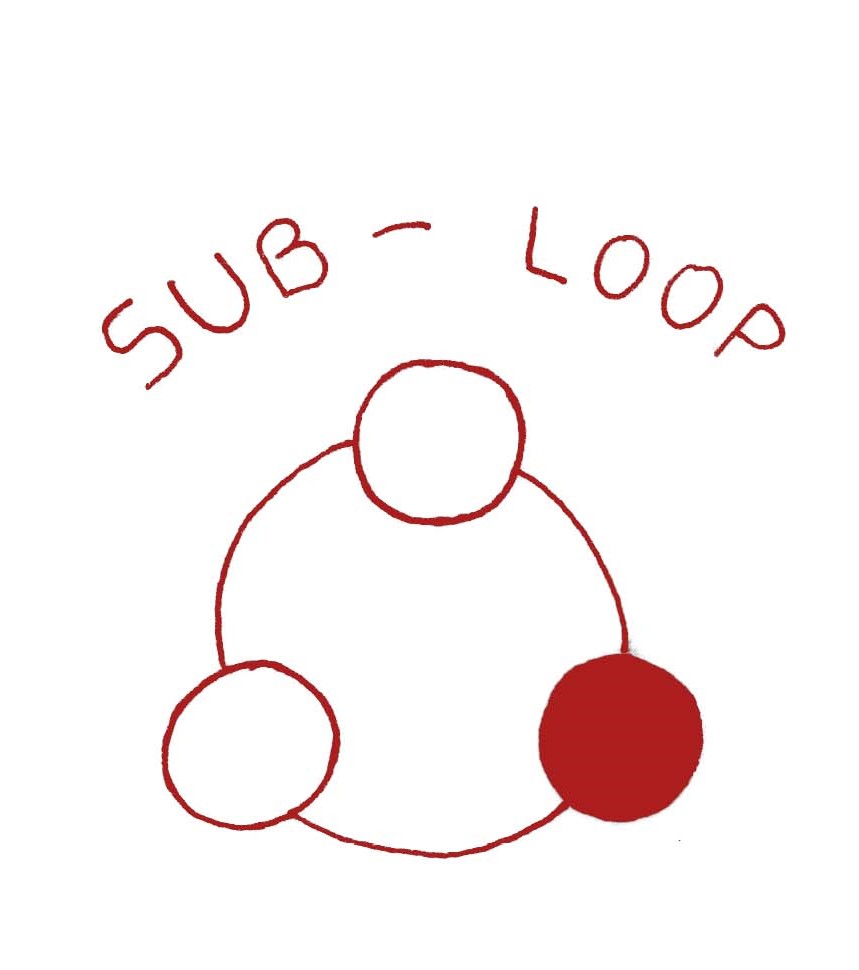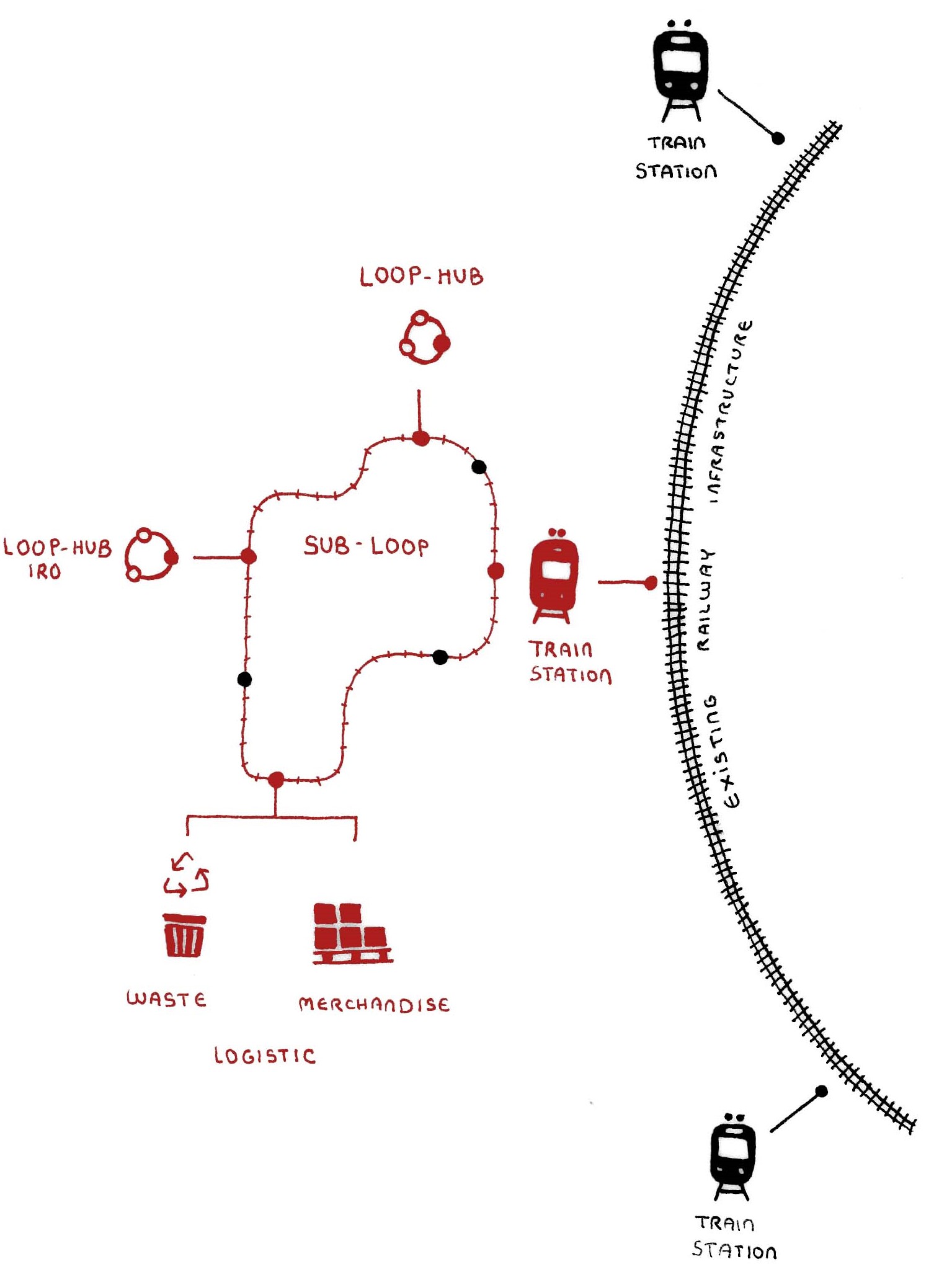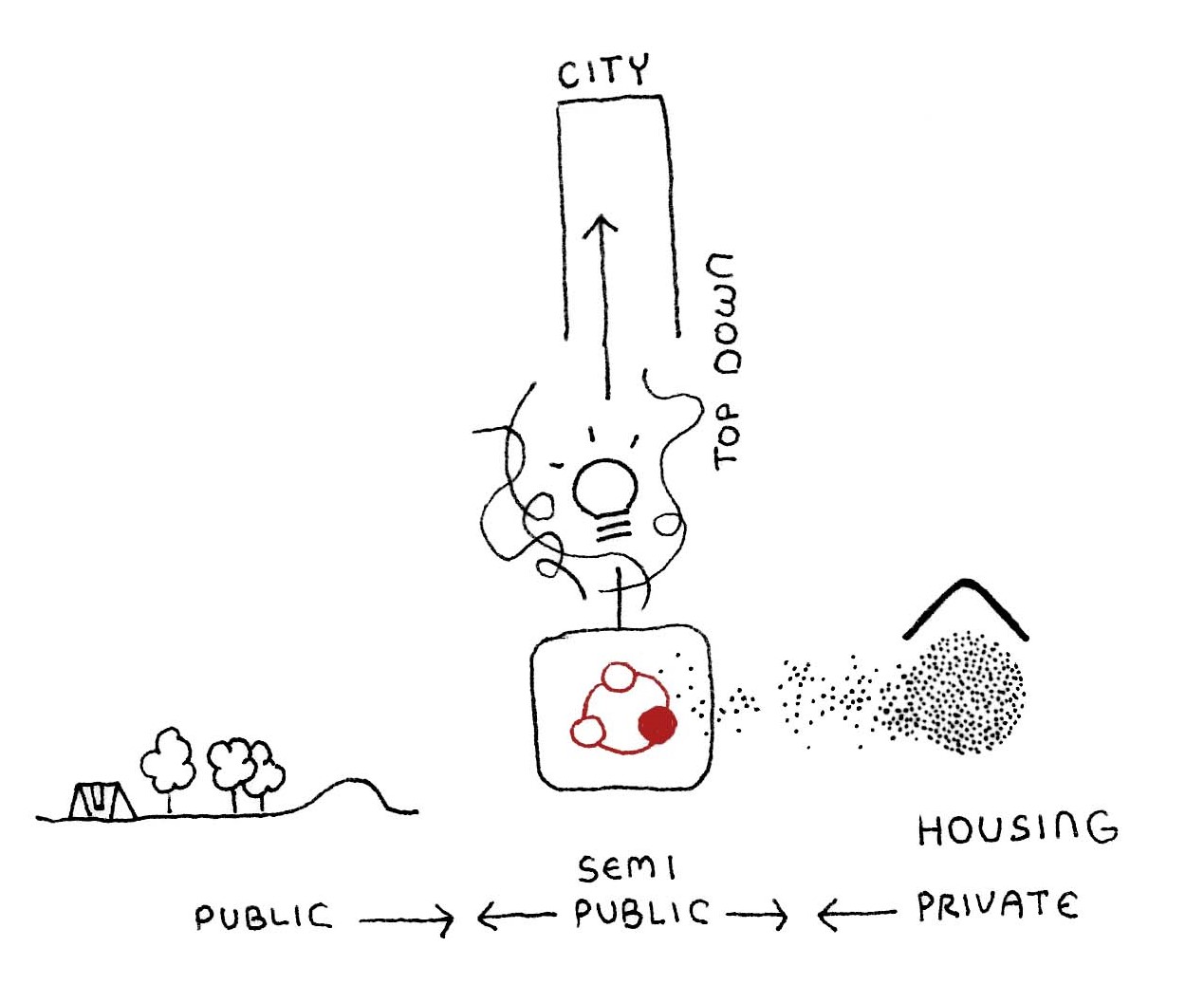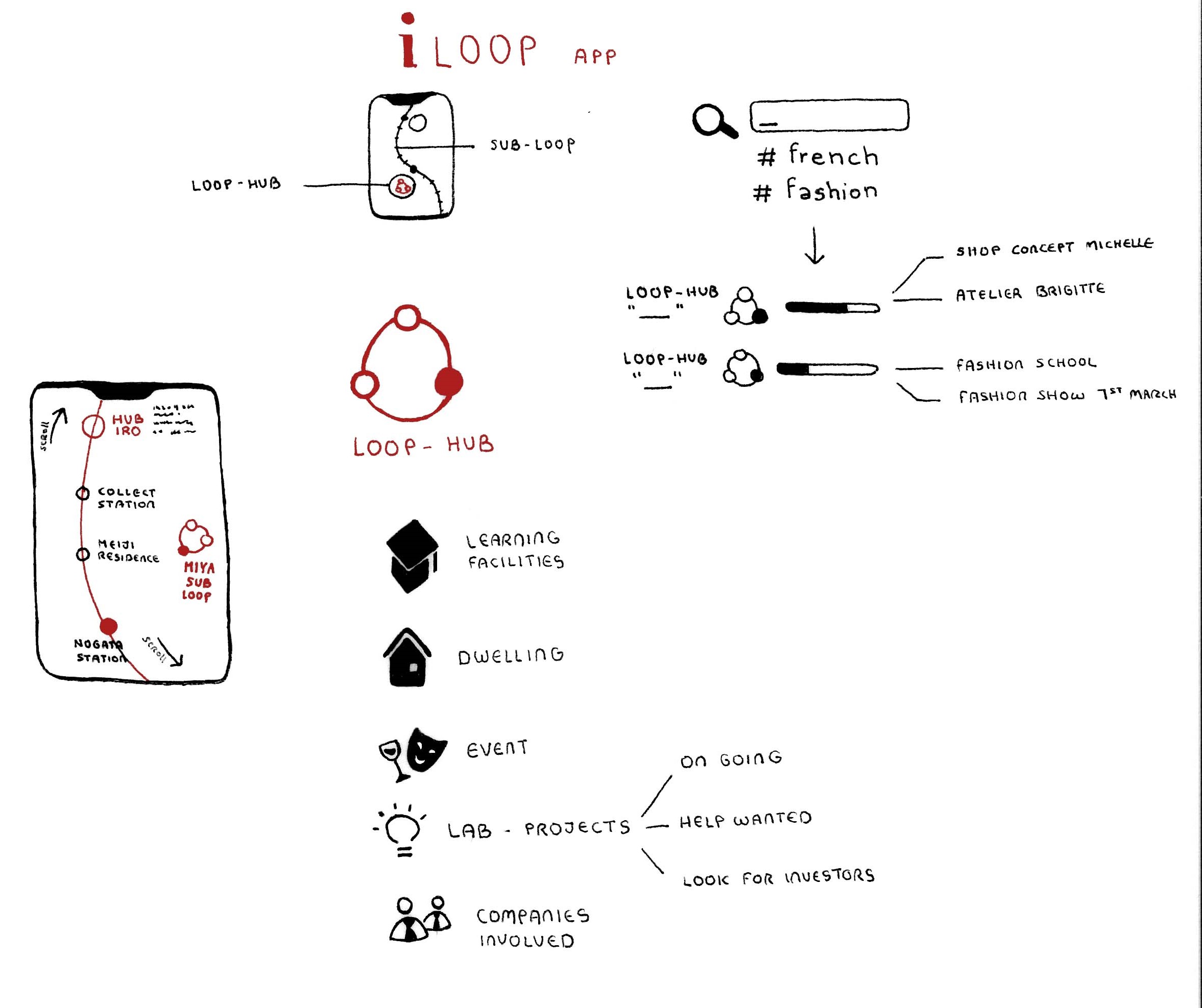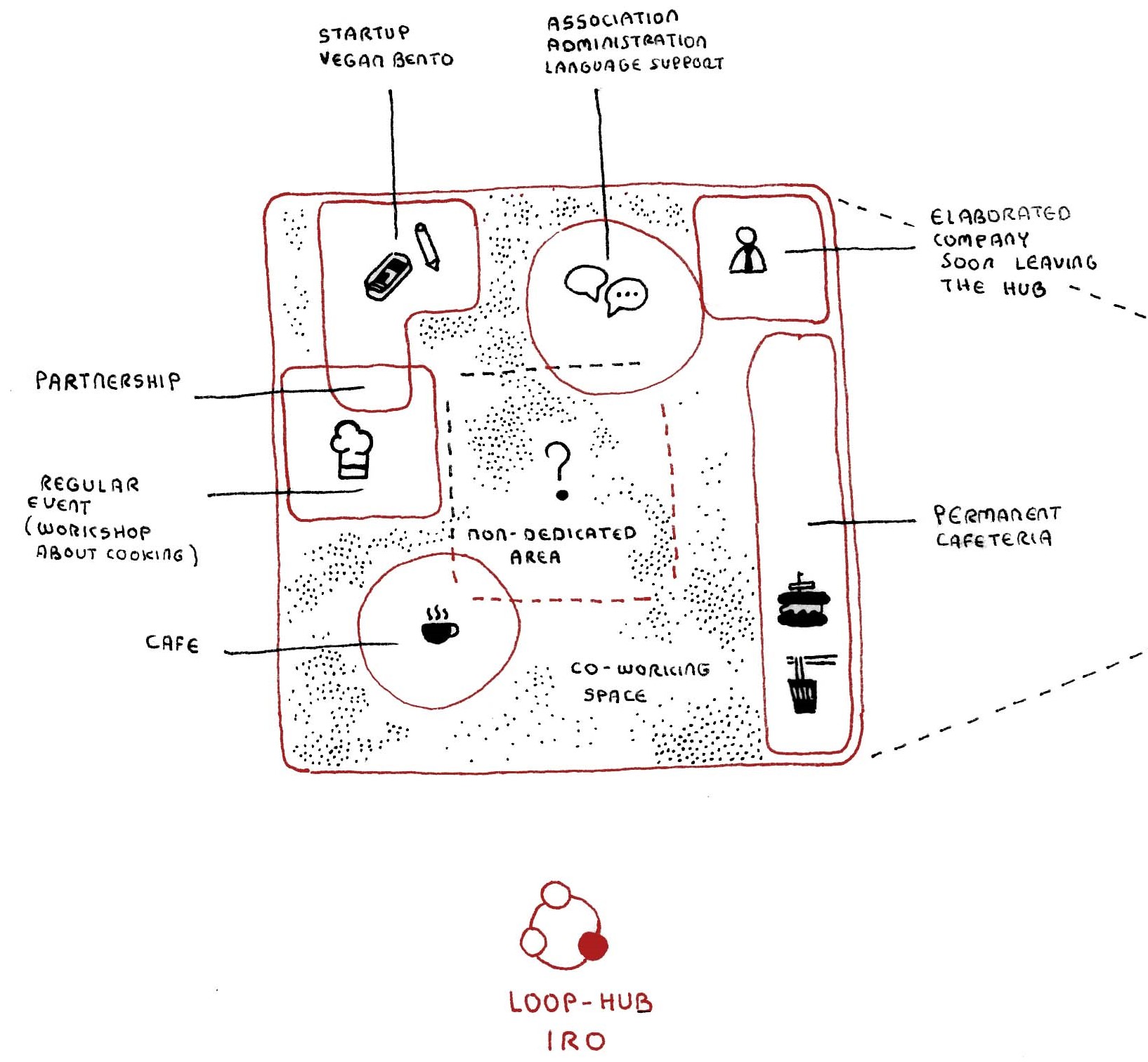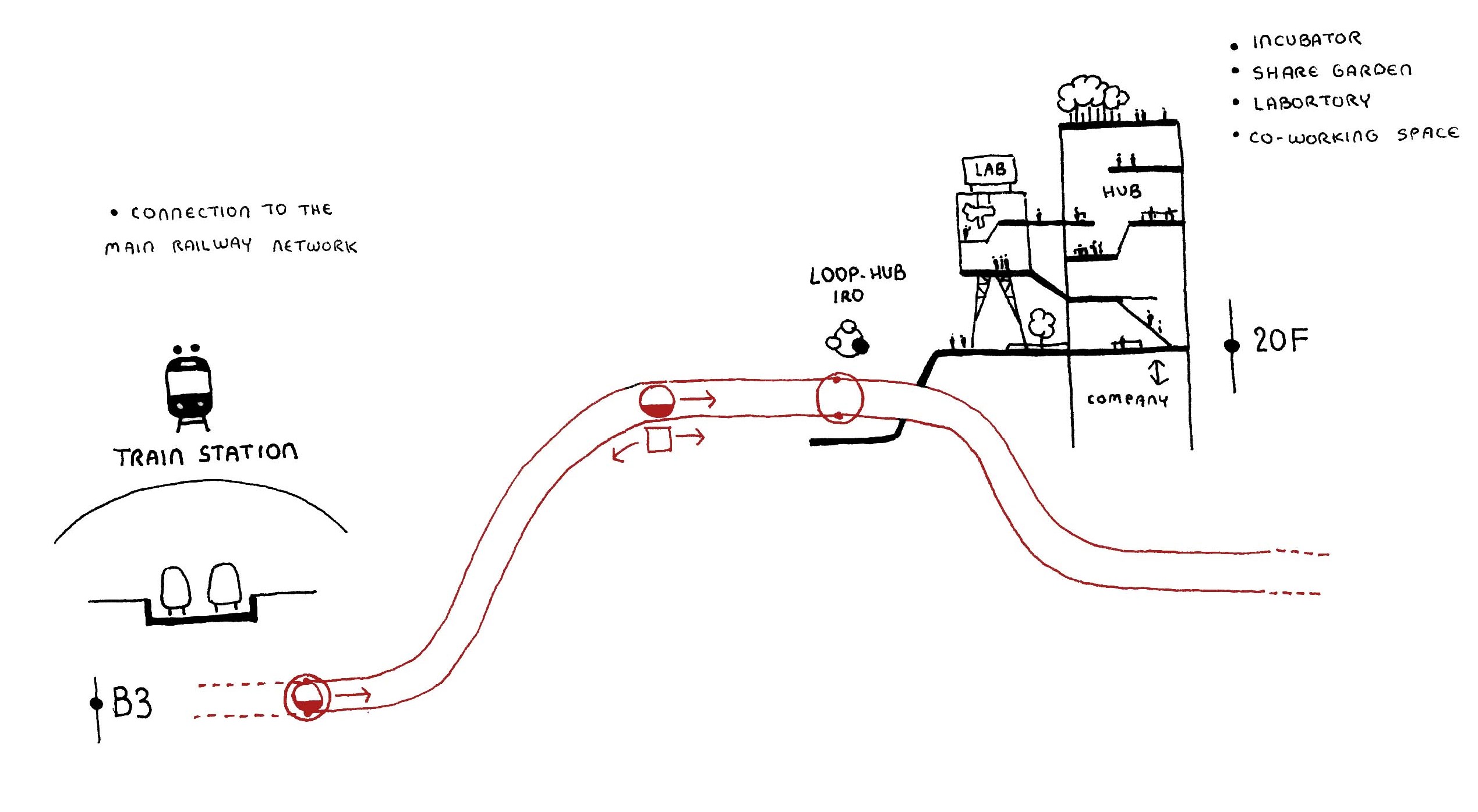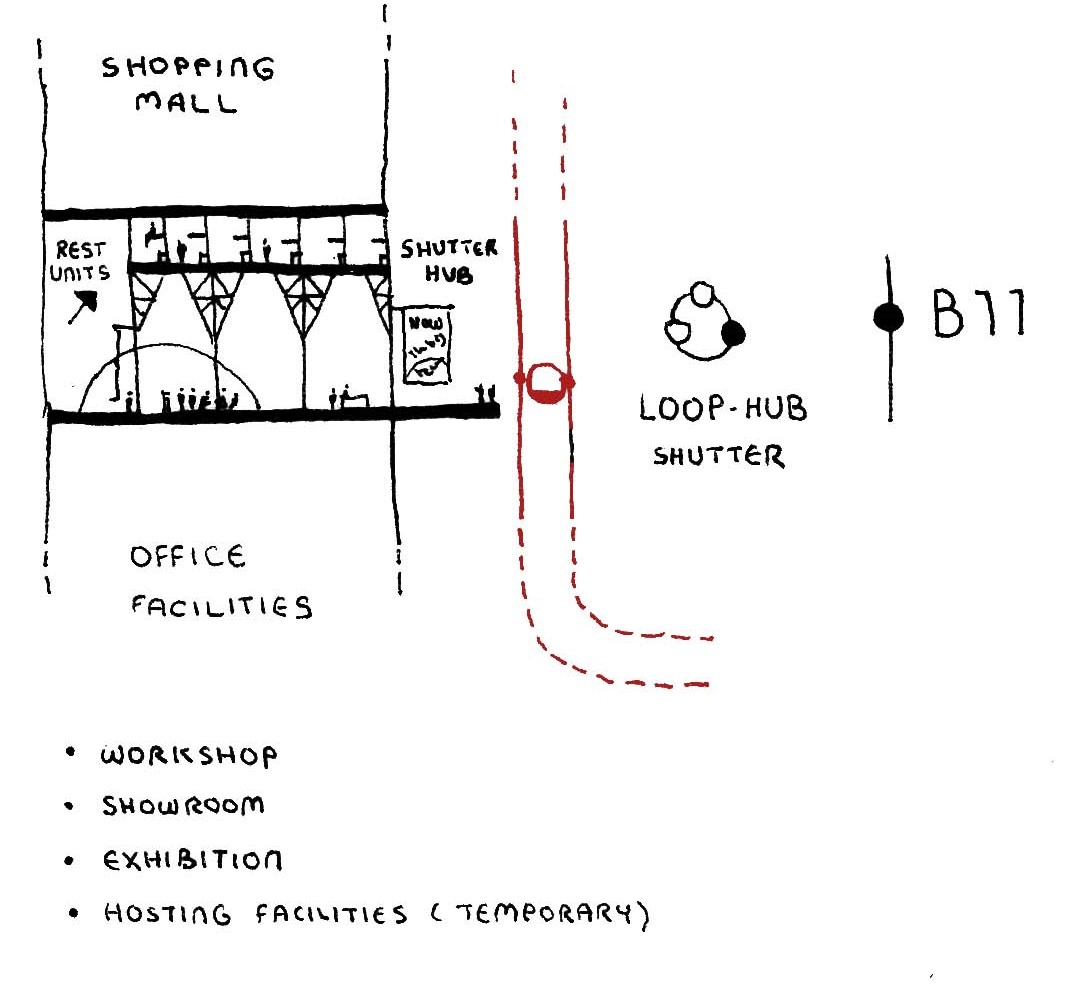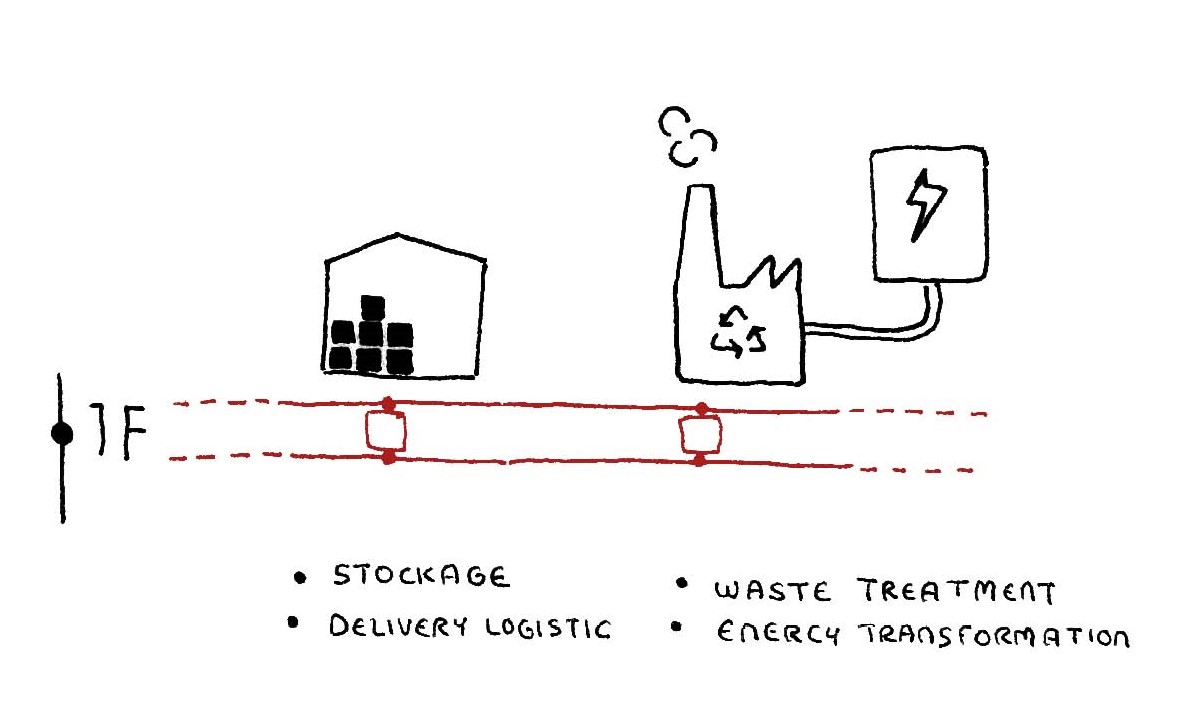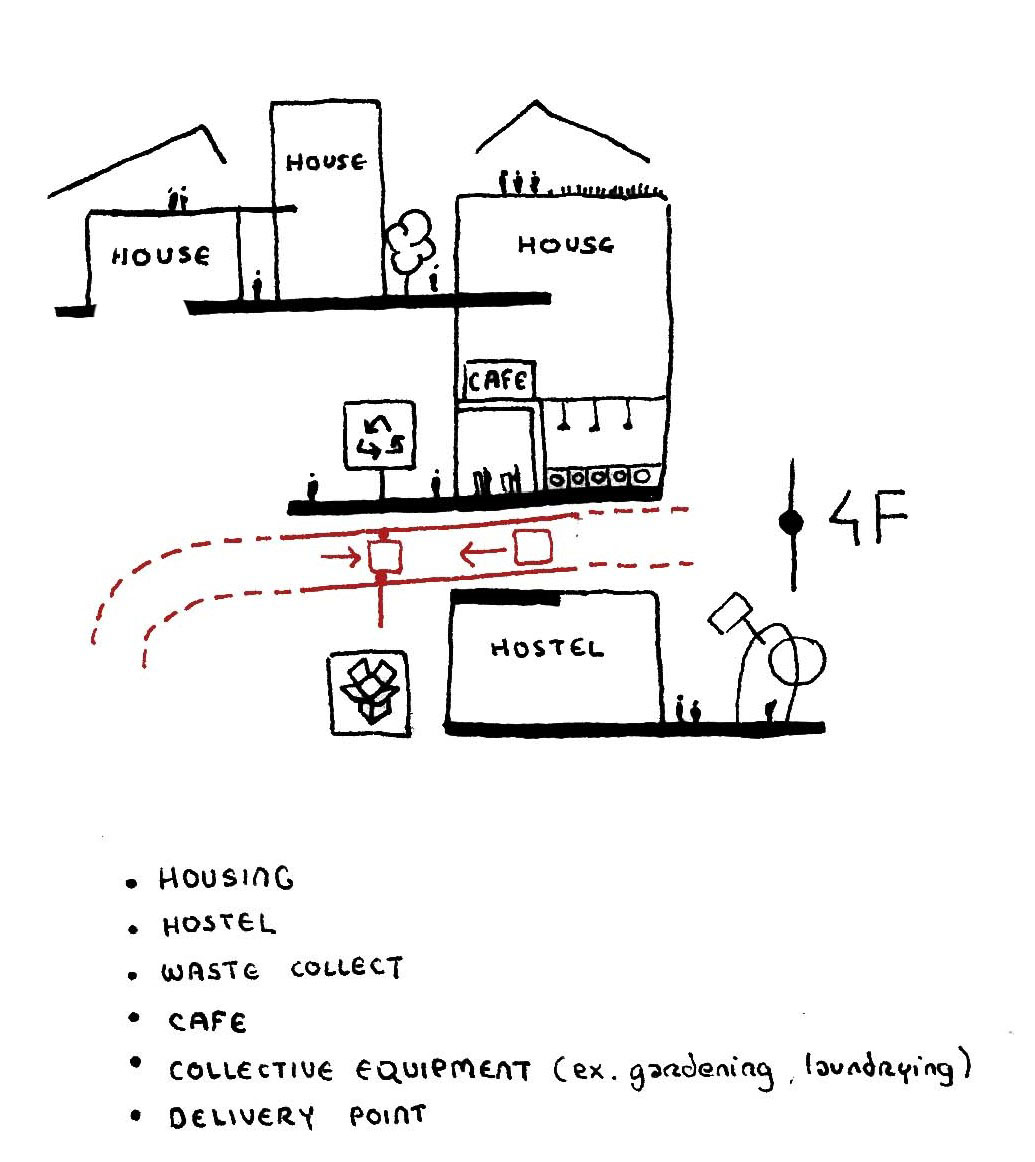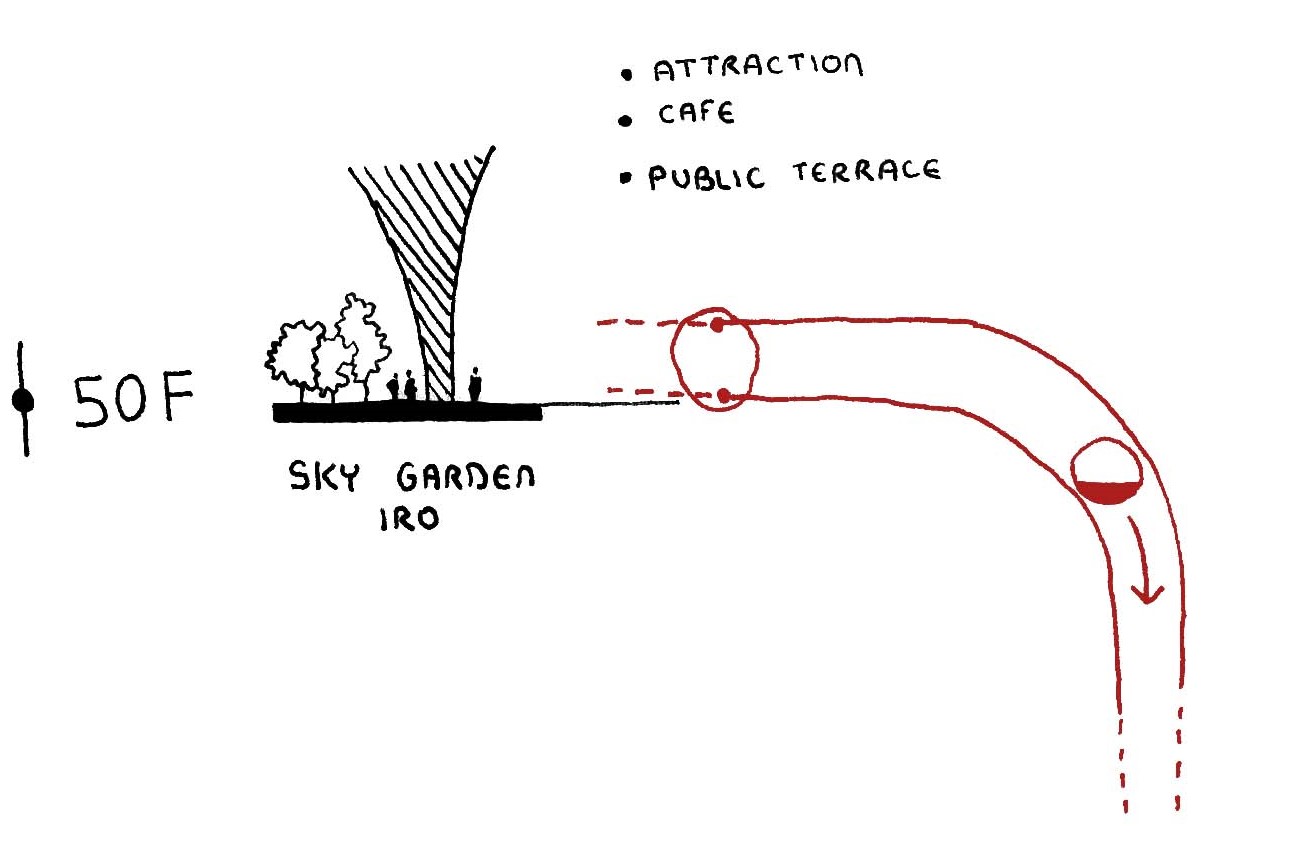Sub-loop
Stakes
With the increasing population density, we could expect some significant changes in outcoming urban landscape. First, because it will probably be the dominant typology of our future living spaces, but most importantly, because the metropolis of today will become the extremely densified areas of tomorrow. With that said, it is crucial to maintain a degree of organisation to keep these areas viable, by offering suitable facilities depending on the evolution of needs, lifestyle and technology.
One of the hotspots of these cities are naturally the stations of public transportation. They are the point where people, economy, or logistic meet. Motion is a condition for cities to exist. They are physical and virtual. Needless to say, if an increasing number of habitants, companies decide to set up in these dense districts, congestion will occur and even if the existing public transportation is extremely optimised, it won’t be sustainable for our future needs. Taking the example of the Japanese railway system, which allows to support an impressive amount of human flow, however still struggling at rush hour.
The future of our cities will in all likelihood take advantage of the verticality which is already beginning to welcome public spaces and facilities like an extension of our public ground floor. To access to these places, we first need to take a transport infrastructure, mostly railway, then enter in private buildings and take the elevators. But why don’t we provide a transport infrastructure that suits these buildings like the railway does for cities’ districts? This future infrastructure will be called “SUB-LOOP” because it acts as a secondary networkconnecting one or several “main” stations and different public spots around the district. It participates in the regulation of the public flow by meshing a local district.
Be local and connected
In extent, the Sub-loop will provide access to new public spaces, but also will participate in new ways of experience the cities. Specifically, it will be the physical link between new incubators called the “LOOP-HUB”. These spaces will be shaped as a hybrid, evolving, coworking space. To make these places powerful actors of the city development, they will be as much connected physically than virtually. Recently, our cities are shaped by social media that connect us and create events, initiatives, creativity. In the Loop-hubs, the virtual tech will serve as an actionable tool to help developing projects and activities. It will work as an open source network regulated by cryptocurrency to guarantee reliable and safer transactions. The government institution is also invested on the platform to collaborate with locals when a project needs to interact with authorities. Each loop-hub will be seen on digital media as a micro centralised information allowing anyone to access to the data (project on-going, investment needs, events, associations,current facilities, services needs).
An in-between organisation
The Sub-loops are the catalyst to expand an in-between space where the loop-hubs give new opportunities to be part of the network and share ideas with communities. This connected hubs will embrace the role of transitional space between private and public. Considering the increasing scarcity of space, private housings will downsize, while more attention will be taken for this hybrid areas. They will actively contribute to develop a top down system and will be the incubator to answer to the new stakes of 2050’s society. Today, the reasons of our movement into cities are not straight-practicals anymore. We are looking for an atmosphere, a dynamic that fits our mood or our objectives. By occupying these loop-hubs, it tells about an identity, a legitimacy to create with others and be the actors of our future environment.
As incubators, these hubs will be in constant evolution depending on the state of each projects. It is important to keep a non-purpose space, to welcome the new occupants. The more a project is advanced, the less supported it is from the hub and eventually become an independent entity that can be relocated outside the hub.
A hybrid transportation
While the Sub-loop is used as a micro-local commute for people, it will be doubled by a second network that manages a sustainable logistics for the district. A second main station will be created and dedicated exclusively to the logistics of merchandise and waste management. These platforms will sort and conduct the loop-containers to the nearest logistic stations, where waste are treated, and goods are stocked. This allows to declutter cities from storage and to improve hygiene control. Along the sub-loops, this merchandise and wastes will be collected in the sub-hubs and at any strategic spot where a demand of collection is needed.
As the optimisation of space becomes essential in our future cities, the sub-loop logistic can use the interior way, where people are traveling, but also take the extent of the outside, when the space around allows it. This gives the possibility to decrease the time of logistic transfers.
January 2020 - Superscape
